Narrative writing is my favorite unit to teach with upper elementary students because it’s a chance for students’ creativity to really shine! Every year, I get to read some truly great stories from my students.
While I love that my students enjoy narrative writing, they often forgo many of the writing skills we have talked about in class because they are so excited to write. The stories can easily become riddled with mistakes, require fluency, and lack structure.
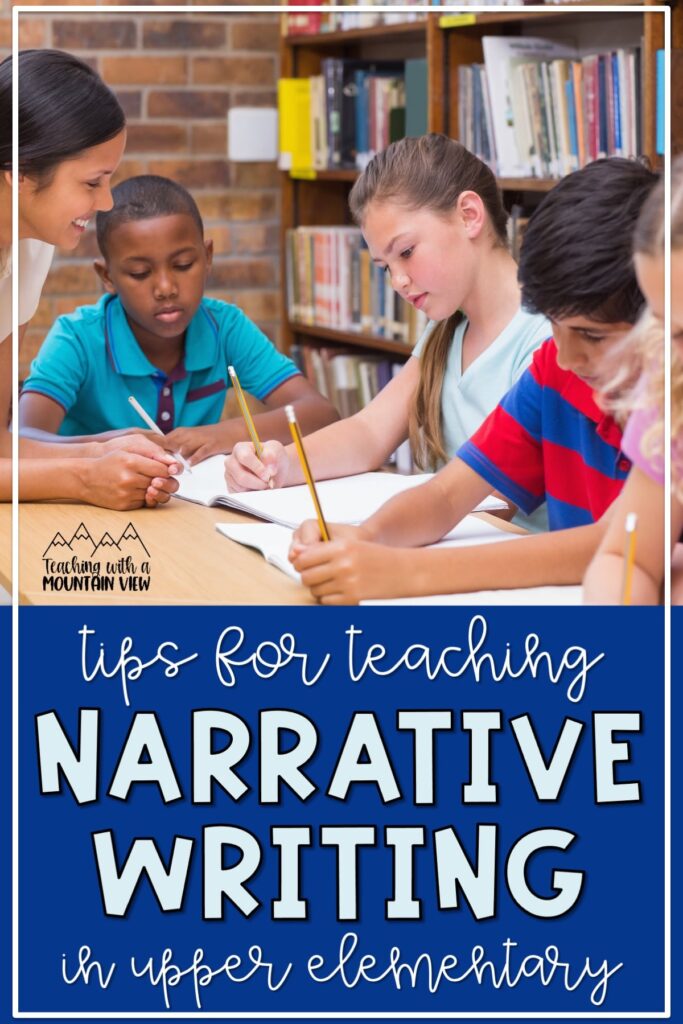
Here are a few tips I have learned along the way to make narrative writing smoother and more productive for my elementary students.
Mentor Text Bundle
This incredible set of mentor texts is designed specifically to help you teach students about specific parts of writing. I have provided a model text, annotation guides and questions, and components that will help your students clearly identify and emulate the important parts of writing. It includes NINE mentor texts to be used as exemplar models for students:
Tip #1: Let students share before they write.
There is a lot that needs to go into the prewriting stage for students. One of those items is sharing with a partner. This step might seem unnecessary if your students have already engaged in prewriting, but orally sharing a story helps your students begin to craft their writing.
By sharing with a partner, students begin to create a map in their heads of what needs to be written and in what order. Before students begin writing their rough draft, simply instruct them to tell the story to the person next to them.
Tip #2: Provide students with a rubric.
You may think that rubrics are bland or that students aren’t actually reading them, but rubrics are essential to our students’ success. Oftentimes our students don’t read the rubrics because we don’t hold them accountable in using them.
Before your students begin writing, pick a day to review your narrative writing rubric. This rubric should be short and sweet, and it actually works best when it’s written in student friendly language. Include the important items you want students to be able to master, such as paragraphs, having a clear plot, and so forth.
Tip #3: Teach a mini-lesson before students write or edit.
It may seem reasonable to think that students know how to write in complete sentences or delete extraneous information in their writing, but that may not be the case.
Instead of asking students to just write and check off items in the rubric, have a skill each day that students will work on. This gives them a specific action item to focus on. Before you turn them over to write or edit, give them a mini-lesson on that specific skill. For example, I may want students to edit the first sentence in their story to make it more engaging. I would first have a mini-lesson over why the first sentence is important and a few ways to craft a great first sentence. I may even show them some examples! Then, my students would edit their essays.
Tip #4: Use exemplars to model narrative writing for students.
We just talked about why mini-lessons are essential for students’ success with writing. An exemplar or mentor text is a key aspect of that mini-lesson. During the mini-lesson, we want students to have a solid understanding of how to execute the skill in their writing. If you’ve ever had that awkward moment when you want to help a student with their writing…without just simply telling them what to write in their essay – exemplars will be your best friend.
Exemplars are writing examples that show a skill in action. However, it uses an independent prompt or story. This exemplar gives students a model for how their writing looks, and it also allows you to demonstrate a think-aloud while applying this skill.
I created this bundle of exemplars for writing, which includes narrative, opinion, and informational exemplars too! This exemplar resource will save you time because there are ready-to-go mentor texts for the main skills your students will need in narrative writing.
The exemplar resource is broken down by paragraph, so students get a close look at each area of a narrative text. They will also get a rubric, so they can rate the text and analyze the different skills in narrative writing. There are three versions: single pages, mini-booklet, and digital! Each essay type comes with two exemplars and an anchor chart.
These exemplars will be a great addition to your mini-lesson. You can focus on the specific skill you want students to accomplish that day, and students have a mentor text to refer to and model their writing after.
Narrative Writing Process Example
Sometimes the hardest part of writing is getting started with an engaging introduction. For this mini-lesson, I had students write down the first few sentences from five chapter books they were reading. We also used The Big Hungry Bear (Amazon affiliate link) as a narrative example.
Then we sorted those introductions into this chart to show the most common narrative introduction types.
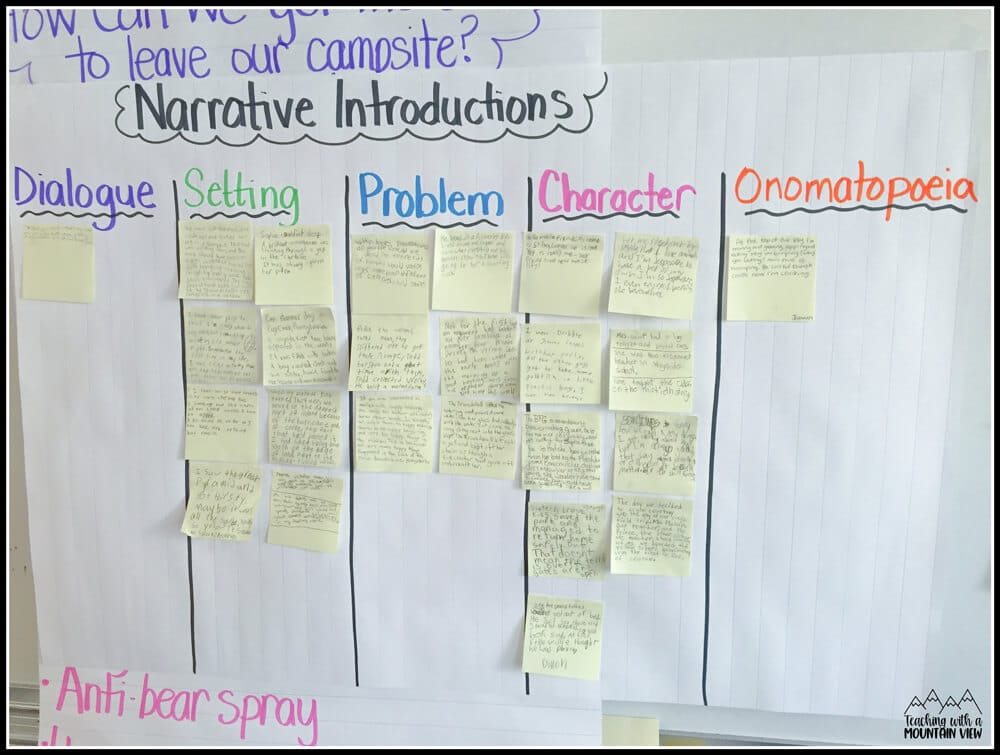
Students also took notes and added examples into their notebooks.
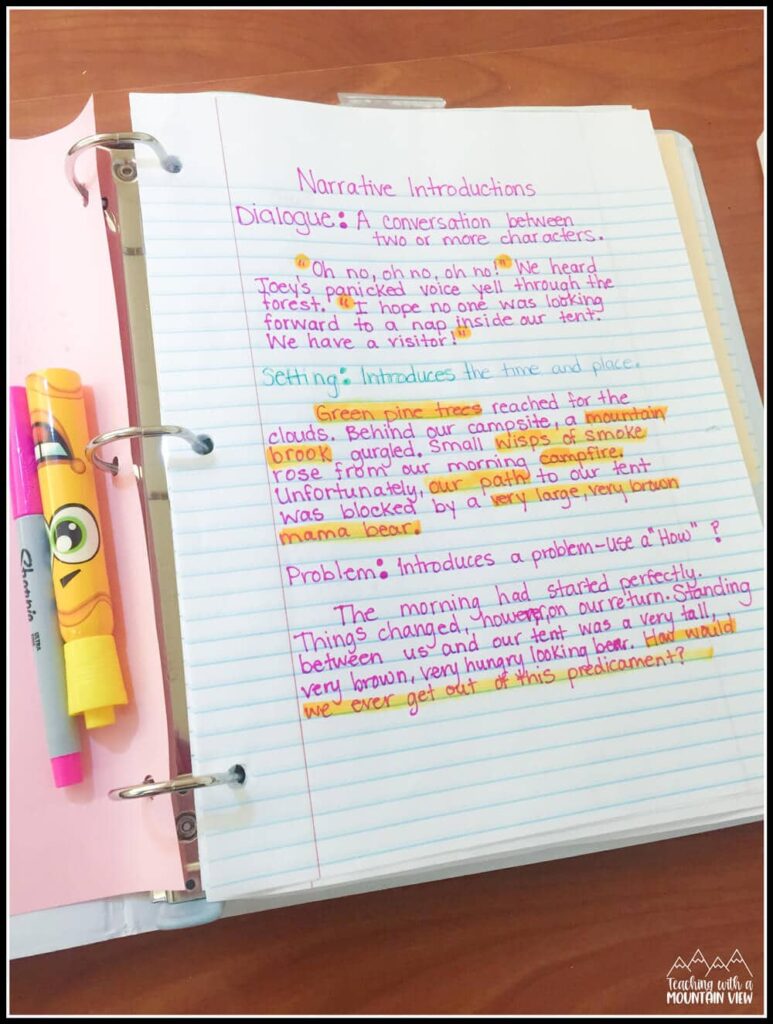
Then it was time to make plans for students to write their own narrative. For this lesson, all students were writing about the same problem (how to get the bear to leave) using The Big Hungry Bear as inspiration. Note: I give opportunities for students to write about topics of their choice often, but when we’re first learning about a style of writing it’s easier to have everyone using the same idea. This way we can help each other brainstorm.
We brainstormed different ideas to get the bear away from the tent.
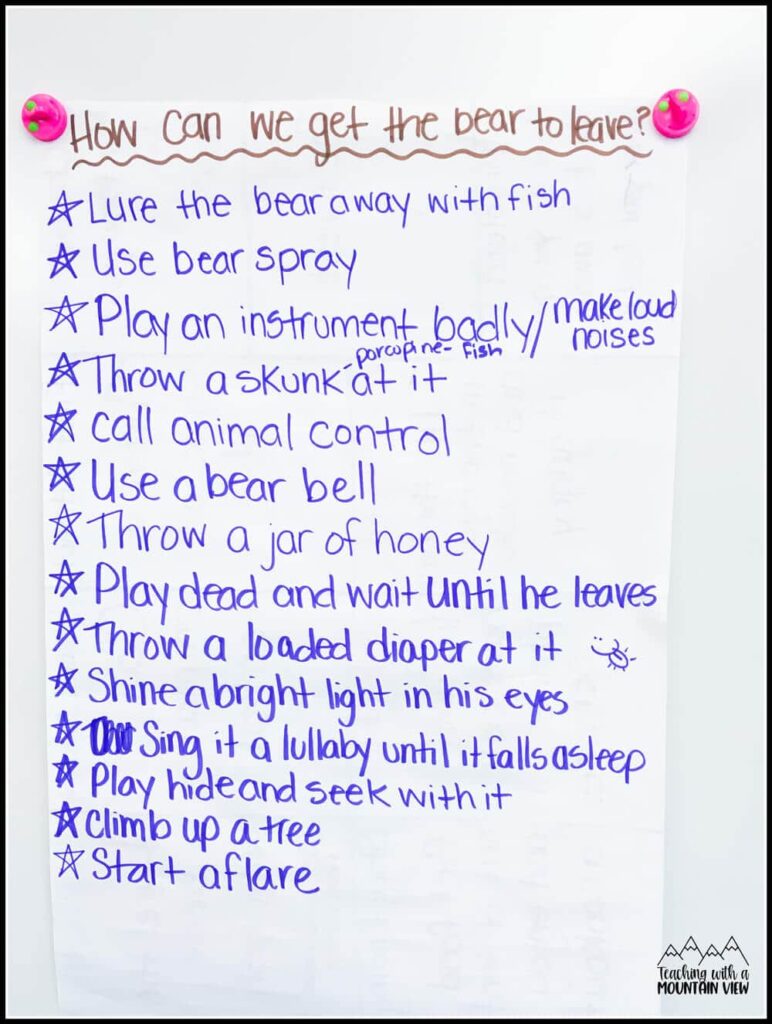
Then students used this visual chart to map out their own unique stories. This meant that even though we were all writing about the same general idea, each student’s individual story would be unique.
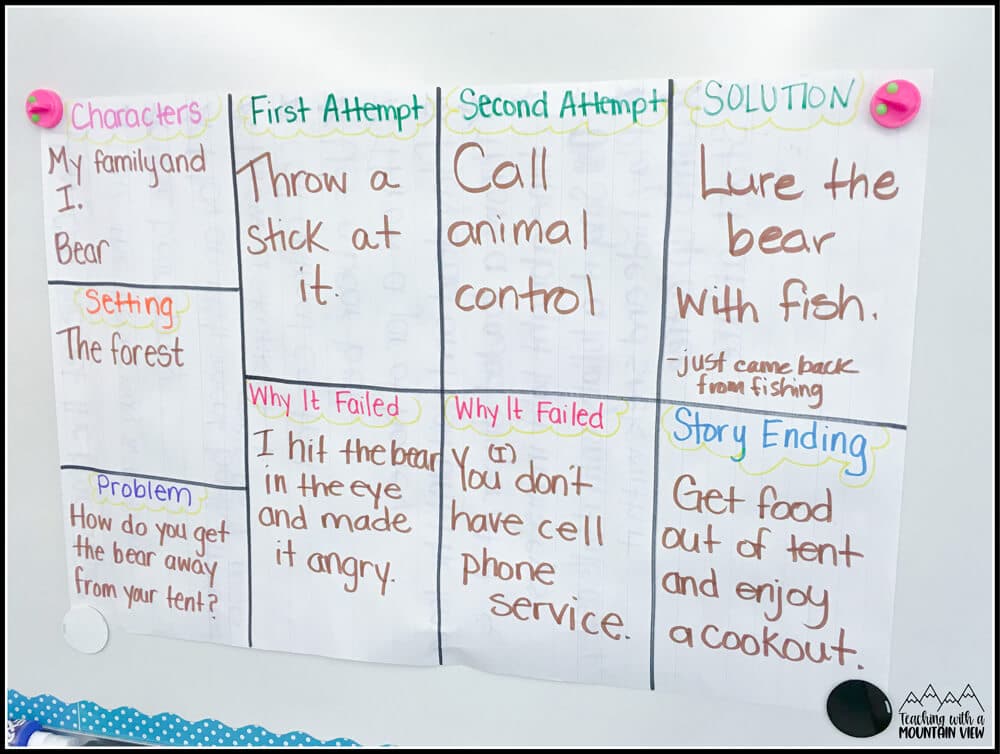
After that, students put everything they had learned together to write a complete narrative.
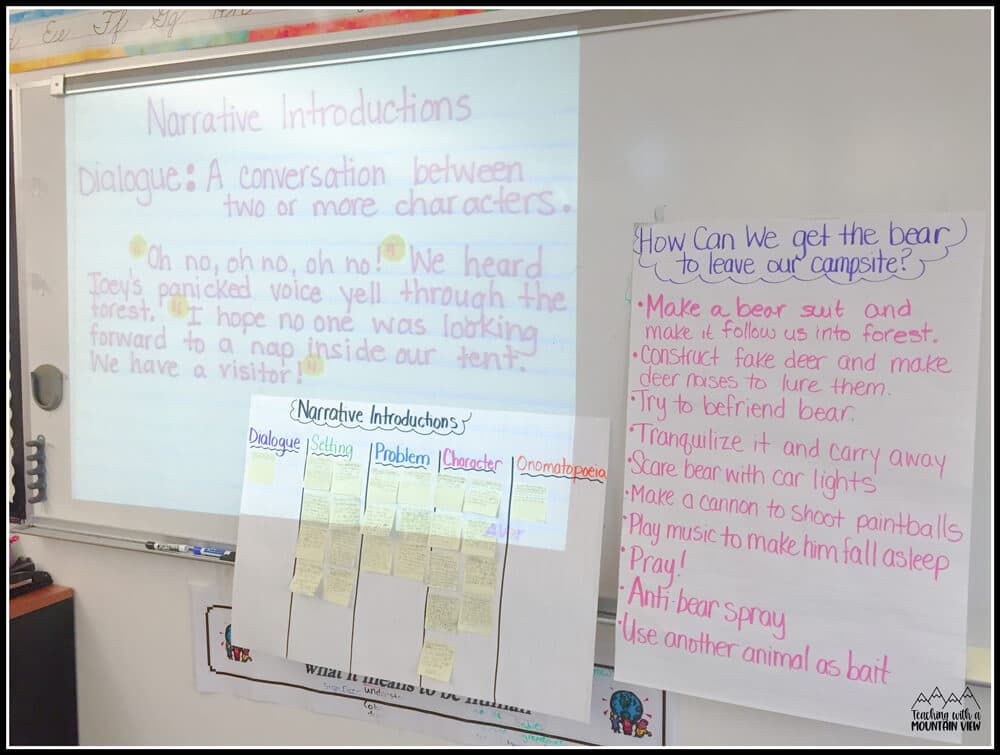
More Writing Tips
Working on other writing skills? Here are more helpful writing blog posts to use with your students.
Mary Montero
I’m so glad you are here. I’m a current gifted and talented teacher in a small town in Colorado, and I’ve been in education since 2009. My passion (other than my family and cookies) is for making teachers’ lives easier and classrooms more engaging.







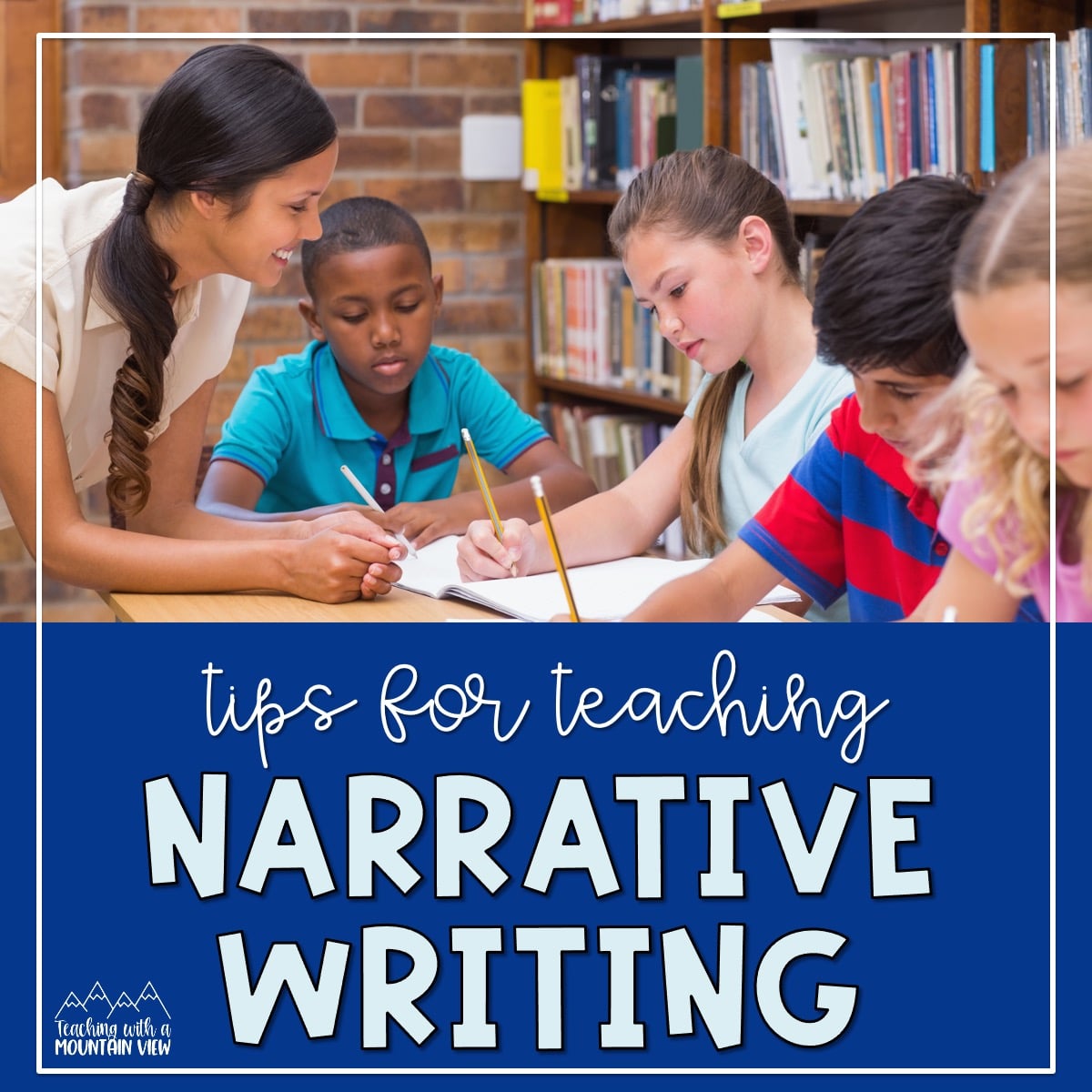
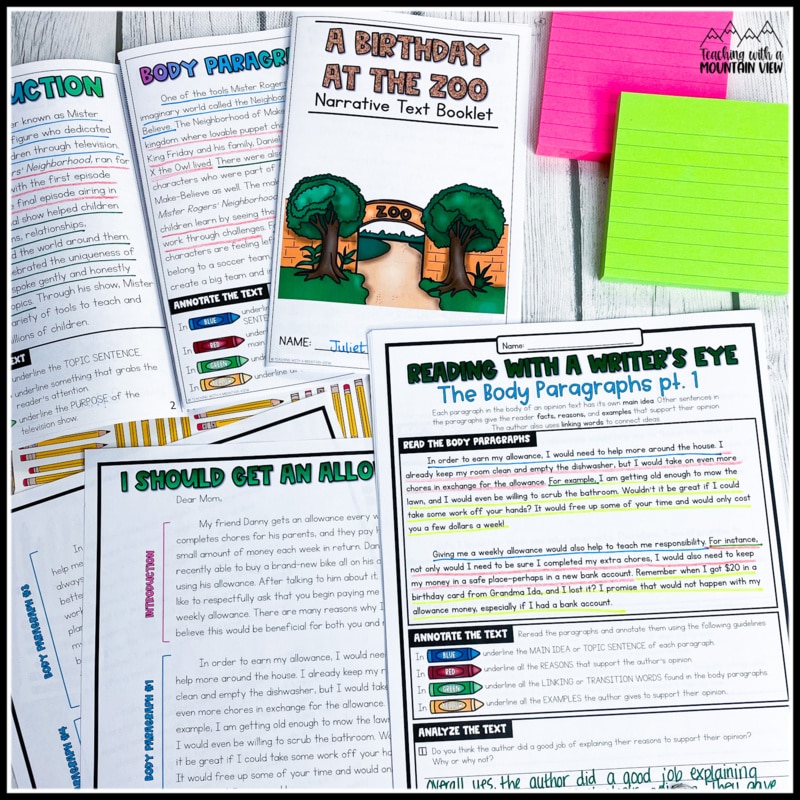





I want to know the title of the book used for this narrative writing piece. The link takes you to a book about a strawberry and has nothing to do with getting the bear to leave.
Good Morning my name is Wendy Diaz-
I am a current ESL teacher in West Texas. I teach 6th, 7th, and 8th graders who have only been in country 0 months to 2 years. Many of them are reading at a 2nd grade level and only know how to write simple sentences. This will be my 2nd year with them and I will be honest I taught 7th grade math for 15 years and took on this position because I thought I could make an impact but the truth is I feel I am failing them. With that being said I have dug into your material and everything seems amazing. What do you suggest I should purchase for the biggest impact on my students.